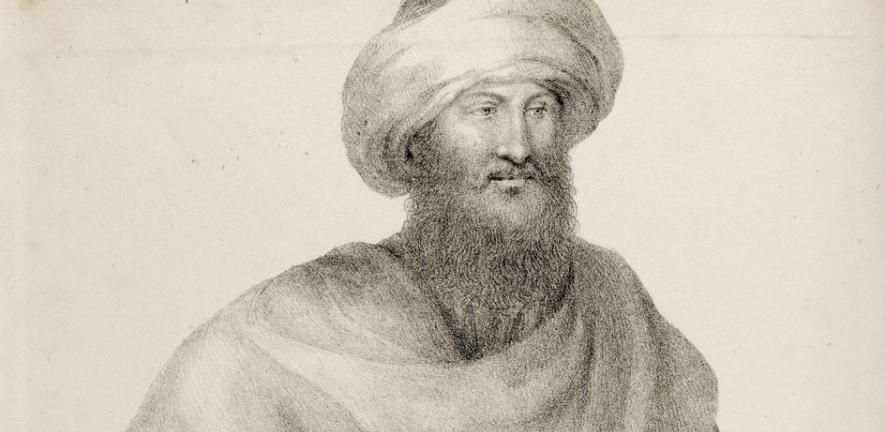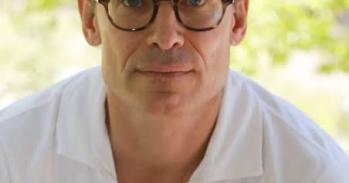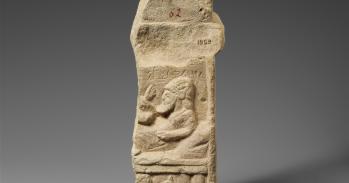
Among the numerous treasures at Cambridge University Library are the private documents of the explorer, John Lewis Burckhardt, who rediscovered Petra 200 years ago today.
Among the numerous treasures at Cambridge University Library are the private documents of the explorer, John Lewis Burckhardt, who rediscovered Petra 200 years ago today.
I was without protection in the midst of a desert where no traveller has ever before been seen. A close examination would have excited suspicions that I was a magician in search of treasures.
John Lewis Burckhardt
Among Cambridge University Library’s 200 miles of shelving and eight million books are three soft leather folders and a scrap book volume sitting alongside countless other items in the manuscripts and archives of its Near Eastern collection.
Unremarkable to the casual observer, the contents of the folders include personal letters, sketches, bills of sale, letters of introduction and other papers.
Contained within, however, are first-hand documents relating to the travels leading up to the rediscovery of one of the lost wonders of the world – Petra, in Jordan – which took place exactly 200 years ago today.
The archive was the property of one John Lewis Burckhardt. Born into a wealthy Swiss family in 1784, he became a scholar and explorer, shunning a life of professional responsibility to satisfy an insatiable urge to travel.
Until Burckhardt discovered Petra on August 22, 1812, it had remained hidden from western eyes for centuries; the last Europeans to visit the city being Crusaders many hundreds of years prior. In the interim, it had faded from memory and native inhabitants jealously kept the whole of Wadi Musa - where Petra is situated - guarded from intruders.
But discovering the ancient city was not without its dangers. Nor was it the intended purpose of Burckhardt’s trip. His goal, set by Sir Joseph Banks, President of the African Association, was a daring commission to traverse the African continent from Cairo and across the Sahara to the Niger with the aim of discovering the river’s source.
Among its archives, the University Library has the original manuscript copy of the Minutes of the African Association which details all Burckhardt's exploits as they were reported back to the Committee until his untimely death. It also owns a first edition copies of Travels in Syria and the Holy Land, the published diary of his trip, as well as the rest of his published works. The original diary now resides in the London archives of the Royal Geographical Society, although the University’s archive is one of the largest and most significant Burckhardt collections anywhere in the world.
Burckhardt’s Petra entry for August 22, 1812, is 12 pages in length and paints a vivid and detailed account, describing exactly where he went, what he saw, the dimensions of the buildings, the carvings on them and their state of preservation. He also describes the lengths he took to avoid arousing suspicion which could have jeopardised the success of his mission. He was aware that as a foreign traveller, even though disguised in Arab dress, he might provoke distrust and be thought to be a treasure hunter. One of his biggest fears was being stripped of his journal, his most treasured possession.
He wrote: “I was particularly desirous of visiting Wadi Mousa, of the antiquities of which I had heard the country people speak in terms of great admiration. I therefore pretended to have made a vow to slaughter a goat in honour of Haroun whose tomb is situated in the extremity of the valley and by this stratagem I thought I should have the means of seeing the valley on my way to the tomb.
“I was without protection in the midst of a desert where no traveller has ever before been seen; and a close examination ... would have exited suspicions that I was a magician in search of treasures … and in all probability would have been stripped of my journal book.”
Though his descriptions lack the modern names for Petra’s antiquities, his journal clearly describes the now well-known rock-cut tombs, the ‘Treasury’ and the theatre. He seems to have penetrated the site as far as the Qasr al-Bint al-Faroun (Palace of the Pharaoh’s daughter) but at this point, and before he had completed his explorations, the local guides became suspicious of his motives and he thought it prudent to cut short his exploration, but not before making the intended sacrifice of the goat in sight of the tomb of Haroun and departing after the sun had set.
Catherine Ansorge, Head of the Near Eastern Department at Cambridge University Library said: “Leafing through Burckhardt's notes and letters - all that remains of the papers relating to his travels up to his visit to Petra – one is thrown back to an earlier time when exploration was more hazardous. Here is a man determined to carry out his mission, but also a man of vision with a deep interest in his subject matter. These letters are unresearched and unpublished since they came to the Library in 1817. Some have a list at the beginning hand written by George Renouard, Burckhardt’s friend and mentor, who was the Professor of Arabic at the time and who must have taught Burckhardt the Arabic necessary for his travels”.
Before Petra, however, Burckhardt visited London, where he met Sir Joseph Banks and agreed on the trip to Africa. In preparation for the visit he was sent to Cambridge in 1807-8 to learn Arabic and spend time learning a variety of useful practical skills. The archive at the Library contains his Arabic homework notes and writing practice.
He began his expedition in February 1809, having set sail to Malta and then travelled on to Aleppo where he stayed for nearly three years. From 1809 to 1812, he travelled in Syria, Palestine and Arabia and went by the name Sheikh Ibrahim Ibn ‘Abd Allah. He also dressed in in Arab style to disguise his European identity. Burckhardt carried out expeditions to Damascus, Palmyra and Ba’albek and kept more or less daily details of his activities in journals. He recounted many stories of his difficulties with the climate, terrain and local inhabitants but also his constant fascination with his everyday experiences.
Following on from his discovery of Petra, the Minutes of the African Association from 1815-17 record Burckhardt waiting in Cairo for a favourable caravan to travel across Africa. Suffering further delays, he grasped the opportunity to travel along the Nile visiting ancient Egyptian sites and then across the red Sea to make a pilgrimage to Mecca. In fact, he never carried out his original plan to cross the desert from the Nile to the Niger, tragically falling ill with food poisoning and dying in October 1817. He was buried in Cairo.
During his travels Burckhardt purchased Arabic manuscripts and he bequeathed his collection of more than 300 Arabic manuscripts to Cambridge University Library in recognition of the days he enjoyed here as a student and of his friendship with Edward Daniel Clarke, himself a traveller and collector of antiquities.
On his deathbed in Cairo he dictated the details of his will to Henry Salt, the Egyptologist and personal friend, “Let my whole library…go to the University of Cambridge … to the care of Dr Clarke…”.
During the time Burckhardt was in the Middle East, Clarke had been appointed to the post of the University Librarian (1817-1822) and so was instrumental in the manuscripts collection reaching the library.
The manuscripts, which arrived in 1819, contain many important historical texts, including the Library’s oldest Arabic manuscript written on paper (dating from 1037) and a copy of the complete ‘1001 Nights’ stories.
The Library also possesses letters and papers relating to the early part of Burckhardt’s travels up until 1812. These are personal letters, extracts from manuscripts, letters of introduction which served the purpose of ‘passports’ giving him permission to travel though particular regions and tribal territories.
Added Ansorge: “The 200th anniversary of this visit of discovery to Petra provides a convenient opportunity to commemorate Burckhardt’s extraordinary achievements as a scholar, traveller, collector, writer and perhaps the first European anthropologist of Middle Eastern societies. He was a brave man and fearless traveller undergoing many difficulties and privations on his often dangerous journeys.”
This work is licensed under a Creative Commons Licence. If you use this content on your site please link back to this page.





